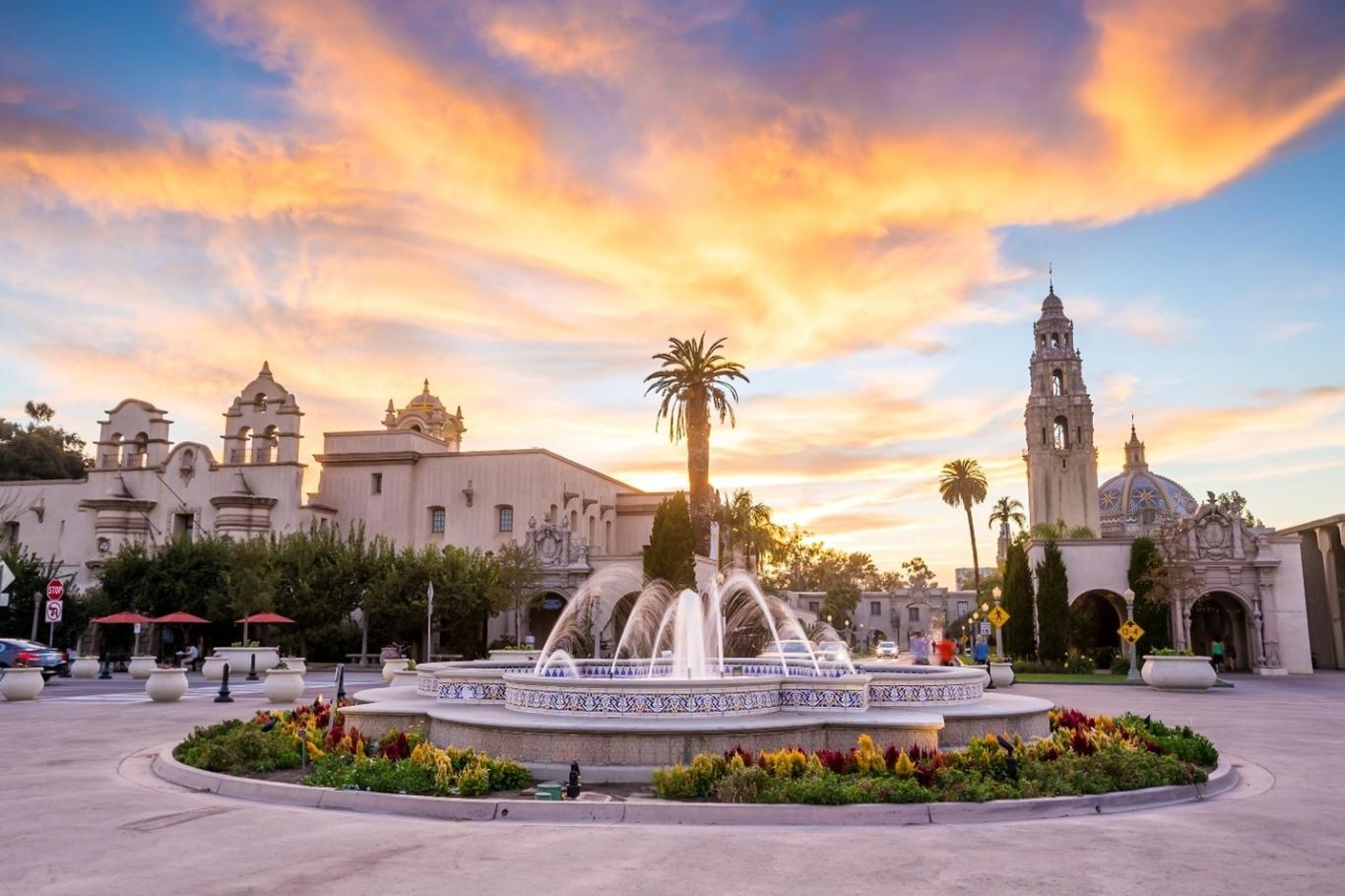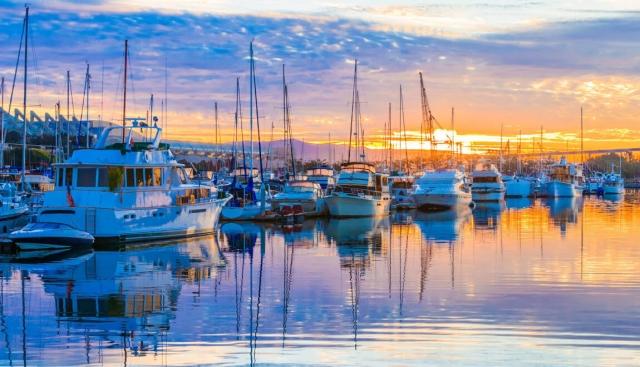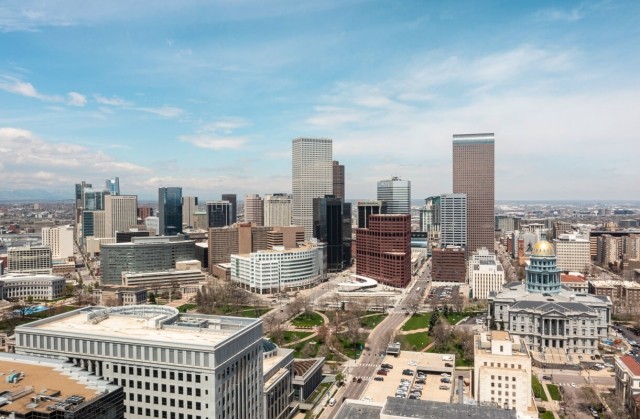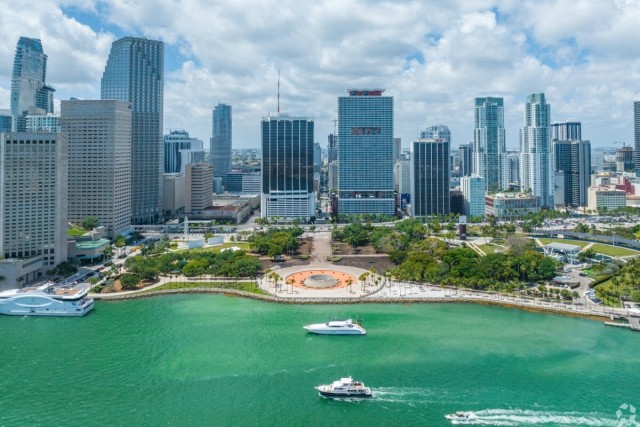Ever dreamed of living in Southern California, particularly San Diego? Well, you’re not alone! With its beautiful beaches, exciting nightlife, delectable cuisine, and trendy neighborhoods, San Diego is a highly sought after residential destination, and has been for quite a while—no shock factor there. But what many renters don’t realize is that finding an apartment in San Diego is rather achievable, as long as you gather the right (reliable) information and take the necessary steps towards finding your new home.
Like any major metropolis, it takes a little extra time and effort to understand the city’s atmosphere, rental market, and pros and cons. But fret not—I’ve done a bit of the hard work for you. Let’s explore America’s Finest City together, shall we?
What Are the Perks?
With top-notch sandy beaches comes more than just the perfect tanning spot—surfing is one of the locals’ favorite pastimes. And whether you’re good at it or not (more than likely not), it’s still fun to give it a try, especially if you plan to spend a lot of time on the water. And if you’re looking to rent in a beachfront neighborhood, then aquatic recreation will be your new best friend. Though it’s not always fun to be shown up by middle-school-aged, professional-like surfers, it’s all about the learning experience—one you’ll likely enjoy (minus the slight embarrassment it may cause during your first few attempts). No matter where you choose to live, you will be next to many outdoor activities in San Diego.
If you enjoy preserving nature and doing your part for the community, San Diego is a great place to put down roots. This environmentally-friendly city focuses on water conservation and recycling. Other than keeping the environment pristine, enjoying the waves, and basking in the year-round great weather, there are abundant attractions to visit and explore after you find an apartment in the city.
Discover stunning architecture, scenic hikes, historic museums, amusement parks, and more by visiting places like the San Diego Zoo, La Jolla Cove, Torrey Pines State Preserve, Balboa Park, SeaWorld San Diego, USS Midway Museum, Belmont Park, and Hotel del Coronado. And let me just say this—these are only a few (yes, a few) of San Diego’s incredible local attractions. Though some are considered “touristy,” they’re that way for a good reason—visitors come to the city with their sights set on these attractions, so yes, tourists will likely be around. But imagine living in close proximity to these unique destinations every day—now that’s what I call a perk.

What Are the Struggles?
Let’s pause on the fun stuff for a quick second—sad, I know—but just like every other city, there are struggles and downfalls that come with living in San Diego, California. If you plan to be a renter here, you’ll need to uncover a few things first.
Do you enjoy circling the block to find a parking spot by the beach, a chic boutique, or a trendy eatery while the driver in front of you (let’s call her Susan) stops at every potential parking spot in hopes that the owner of the vehicle will magically appear and move their car? I know I don’t, which is one of the reasons living in San Diego could be a bit frustrating for those of us who prefer to travel by car. Parking is tight here—and that’s not a dramatized statement. Like most downtown areas, driving and finding parking in the heart of the city or a popular neighborhood can be a tad difficult, especially in comparison to the outer suburbs. You’ll need to decide whether driving, biking, walking (a reasonable distance), or public transportation is your best bet in San Diego—this of course depends on which part of the city you choose to live in.
Yes, it’s true what you’ve heard. San Diego has a very high cost of living, so you’ll need to be smart with your money, plan ahead, and save as much as you can. But don’t let this deter you from moving or renting here—just take it as a fair warning. Simply get your ducks in a row, and you’ll be good to go! There are plentiful neighborhoods to explore, from bohemian vibes in Ocean Beach to chic, walkable streets in Little Italy.
What's the Cost of Living?
As I’ve said, the cost of living in San Diego is relatively high. As a renter, you’re looking at higher rental rates as well, so be prepared. Lucky for you, San Diego boasts rentals that are luxurious, cheap, and everything in between. Some may be harder to find than others, but it’s all about the search.
The current average to rent an apartment in San Diego is $2,863—but let’s explore some specifics based on apartment size while we’re at it. A studio apartment is currently renting for $2,472 a month, with a square footage around 597 square feet, while a one-bedroom apartment costs $2,863 per month for around 729 square feet. The price jumps when it comes to renting a two-bedroom apartment, renting for around $4,052 for a 1,060-square-foot unit.
Prices have eased slightly, dropping by more than 10 percent over last year, but they're still well above the national average. However, after discovering what San Diego has to offer, from its sandy shoreline, local restaurants, hip atmosphere, and diverse neighborhoods, it’s easy to see why there’s an influx of interest in this bustling city. And if you’re still one of those interested individuals, listen up (aka continue reading) for some apartment renting tips.

Tips for Renting in San Diego
When considering renting an apartment in San Diego, or any city for that matter, you need to know what you’re looking for. When I say that, I mean location, location, location—though apartment size, cost, and amenities are pretty important too. Whether you’ve dreamed of living in a beachfront neighborhood, an urban downtown locale, or in a safe gated community, decide where you want to live! That’s the first step to finding your perfect apartment in the city.
It’s vital to understand how San Diego differs from other major cities, such as Boston, Atlanta, and Dallas. They each have their own unique qualities, and one of San Diego’s most differential characteristics is its extremely long summer season. Why is this important, you ask? Well, if you’ve ever noticed how long bikini season (or sweat-to-death season, as I like to call it) lasts in Southern California, then it should be no surprise that those looking for warmer weather for an extended period of time flock to San Diego. Seasonal residents who desire a summertime temperature and mindset typically stay in the city from early spring to late fall, or from March to October.
For you, as a renter, this means that summer vacationers drive up occupancy rates during the warmer months, and therefore make it harder for you to find an apartment. If you can (and I highly suggest that you do), sign a lease starting anywhere from November to February in order to find the best rental rates, move-in deals, and availability. January is the optimal time to find an apartment in San Diego—new year, new you apartment, right?
After you’ve found the apartment you’ve decided on, be sure you understand the provisions and specifics of a California residential lease agreement. Just because you’ve seen one (or twelve), doesn’t mean you’ve seen them all. Rental laws vary by state, so make sure you check with the local government to get a play-by-play on California residential lease agreements before you sign one. Read the lease over carefully, watch out for red flags, and don’t be afraid to ask questions, especially if you haven’t previously rented in the state of California. There’s no shame in the lease-reading game. You want to know exactly what you’re agreeing to, so read the lease, check it twice, and find out if it sounds naughty or nice (questionable or trustworthy—if you prefer less-fun lingo).






